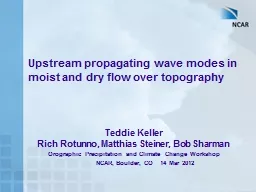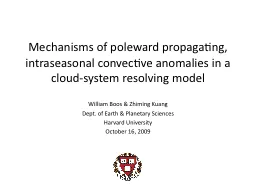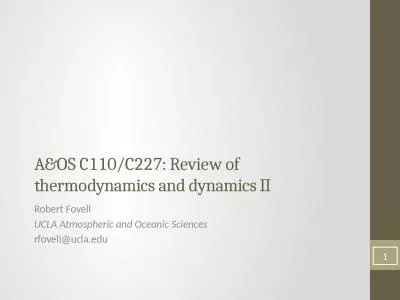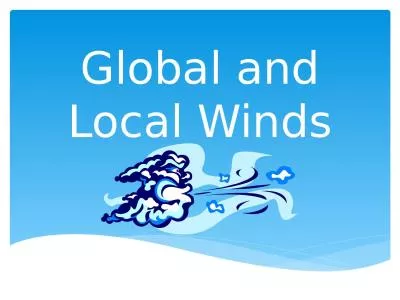PPT-Upstream propagating wave modes in moist and dry flow over
Author : tatiana-dople | Published Date : 2016-03-19
Teddie Keller Rich Rotunno Matthias Steiner Bob Sharman Orographic Precipitation and Climate Change Workshop NCAR Boulder CO 14 Mar 2012 Miglietta M M R Rotunno
Presentation Embed Code
Download Presentation
Download Presentation The PPT/PDF document "Upstream propagating wave modes in moist..." is the property of its rightful owner. Permission is granted to download and print the materials on this website for personal, non-commercial use only, and to display it on your personal computer provided you do not modify the materials and that you retain all copyright notices contained in the materials. By downloading content from our website, you accept the terms of this agreement.
Upstream propagating wave modes in moist and dry flow over: Transcript
Download Rules Of Document
"Upstream propagating wave modes in moist and dry flow over"The content belongs to its owner. You may download and print it for personal use, without modification, and keep all copyright notices. By downloading, you agree to these terms.
Related Documents














